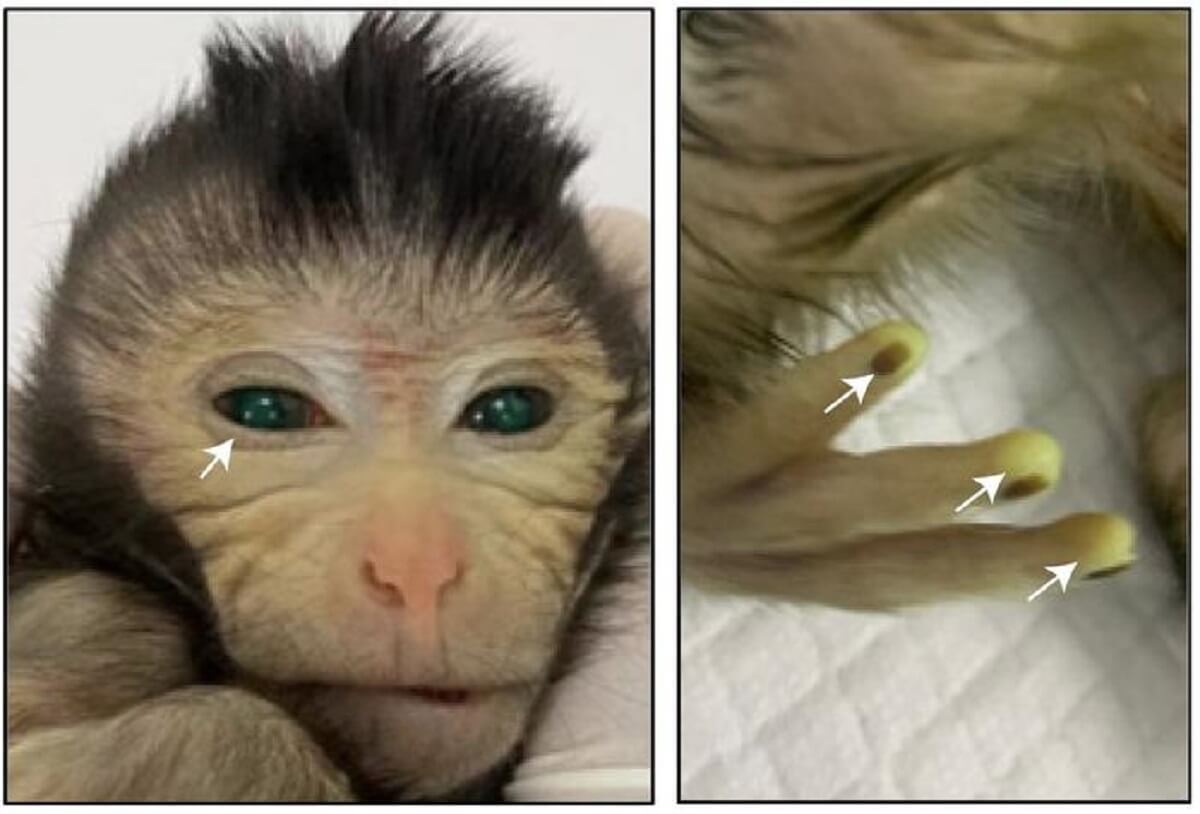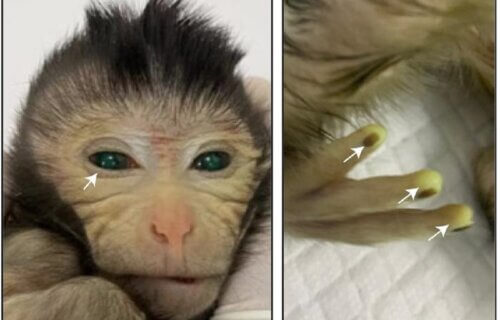BEIJING, China — In a groundbreaking advancement, scientists are celebrating the first live birth of a “chimeric” monkey, a male primate with a significant number of cells originating from a monkey stem cell line. This unique creature also has some startling features — including glowing fingertips and green eyes!
The three-day-old animal developed these green fluorescent signals in various body parts, with stem cell contributions to different tissues ranging from 21 percent to 92 percent. This “chimeric” monkey — meaning a creature formed from two different animals — consists of cells from a pair of different embryos from the same monkey species. The process has been previously accomplished in rodents but never before in other species, including non-human primates.
“This achievement is a long-sought goal in the field. The research bears implications for our comprehension of naive pluripotency in primates, including humans, and holds practical significance for genetic engineering and species conservation,” says the study’s lead author, Dr. Zhen Liu of the Chinese Academy of Sciences (CAS), in a media release. “It can facilitate the creation of precise monkey models for neurological disease research and other biomedical studies.”
The cynomolgus monkeys, also known as crab-eating or long-tailed macaques, were the subjects of this research. The research team established nine stem cell lines from seven-day-old blastocyst embryos. These cell lines, cultured for enhanced differentiation potential, were verified as pluripotent, meaning they could develop into any cell type necessary for creating a live animal. The stem cells were tagged with a green fluorescent protein to track which tissues originated from these cells in any resulting animals.

A specific subset of stem cells was injected into embryos that were four to five days-old, which were then implanted into female macaques. This process led to 12 pregnancies and six live births. One live-born monkey and one miscarried fetus were confirmed as significantly chimeric, with the stem cells contributing to a wide array of bodily tissues, both being male.
The research team used the green fluorescent protein as a marker to identify stem-cell-derived tissues and employed gene sequencing, among other tests, to confirm their presence in various organs, including the brain, heart, kidney, liver, and gastrointestinal tract. In the live-born monkey, stem cells contributed to an average of 67 percent across 26 different tissue types. The rates were somewhat lower in the fetal monkey.
They also found stem-cell-derived cells in the testes and cells that would develop into sperm, in both specimens.
“In this study, we have provided strong evidence that naive monkey pluripotent stem cells possess the capability of differentiating in vivo into all the various tissues composing a monkey body,” says Dr. Miguel Esteban, a co-author from BGI Research and CAS. “This study deepens our understanding of the developmental potential of pluripotent stem cells in primate species.”
The team plans to continue exploring the mechanisms that allow embryo survival in host animals to “improve the efficiency” of creating chimeras.
The study is published in the journal Cell.
You might also be interested in:
- Amazing genetic oddity gives young cancer patient 2 sets of DNA
- Organ transplant breakthrough: Scientists grow hybrid kidneys using human and pig cells
- Do humans see the same colors monkeys can? Scientists find the answer
South West News Service writer Stephen Beech contributed to this report.

